
NOMAD’S






Amboseli: the stage for Kenya to set the standard for fusing luxury safaris with regenerative tourism. Amboseli’s blossoming number of lodges and tented camps are promoting community-based conservation initiatives with profound social impact potential, shaping the landscape for future generations.
There’s an increasingly vital public-private partnership effort for transboundary elephant and wildlife conservation management. Many of the famous “tuskers” roam
Elewana Tortilis Camp
offers an exclusive experience within the private Kitirua Conservancy that has seamless access to the National Park. This luxury bush lodge provides as much of an elevated experience as its namesake - the Acacia Tortilis. With in-house Gold Level guides, Elewana Tortilis is an ideal selection for guests looking for a very photographic and endlessly picturesque experience with brilliant bush dining experiences.
freely between Kenya and northern Tanzania, where trophy hunting is still a threat. The burgeoning tourism scene of Amboseli is also a safari that is in support of protecting these
Elerai Camp
boasts one of the most exquisite vistas of Mount Kilimanjaro and their infinity pool overlooking the watering hole with its constant stream of wildlife is a true delight. Elerai is designed with both a spacious undercanvas experience for Kilimanjaro views or a well-appointed cottage that overlooks the elephant corridors. Sundowners at an epic spot with warm hospitality staff and the gorgeous organic architecture and design transport guests to a unique lodge prime for elephant viewing.
magnificent creatures. If you want to see elephants like never before, here are 3 of our top picks -
Porini Amboseli Camp
is in the heart of the Selenkay Conservancy. The Porini experience is one we’ve been hearing about as a symbiotic relationship with their local Maasai partner community that pairs hospitality, impactful cultural discovery, and a wildlife and landscape variety all in one destination. The tented camp is as charming as its staff and the elevated viewing platform makes for an immersive finale after a full day out in Amboseli.
Follow our Instagram to discover more of these fantastic Amboseli destinations while we prepare to launch our Nomad Amboseli Expedition, you won’t want to miss this!
Want to beat the peak season crowds? Book your Amboseli Adventure right away.




I'm excited to embark on a journey as the guest editor for this edition of Nomad Magazine, where we delve into the world of design, intricately woven into the tapestry of travel experiences, both in Kenya and beyond.
Putting together this issue of Nomad has been an absolute dream! When I spoke to the team late last year, I pitched an issue that was focused on Design. It may seem like an odd choice of theme for a magazine that is all about travel but my logic was that Design touched on so many elements of hospitality. I also recently rediscovered "Abstract; The Art of Design", a 2 season Netflix documentary series which highlighted the approach of designers from multiple creative disciplines. It continues to be an incredible point of inspiration for me as a jewellery designer and maker. I found myself repeatedly drawn back to the episode on Ilse Crawford, an award winning British interior designer who said that one should, “Approach design through interrogation and empathy for the human experience.” In guest editing this issue, this single statement was my true North in both writing and reaching out to contributors.
Is it possible that the last two months have afforded me with even more awe and love for this beautiful country and continent we call home? From the savannah to the sea, I’ll share my travel to 2 stunning Kenyan properties that showcase strong and distinct design prowess and speak to the designers themselves.
We chat to Sunny Dolat, who is making waves internationally in the fashion scene with his erudite perspectives on design and curation in the African context. We’ll talk about inclusive design, landscape architecture and highlight some incredible East African brands. Last but not least, a visit to Cape Town will feature an Art & Design focused guide from Jackie May, founder and editor at Twyg and an uber cool stay at a Design Hotel.
There would have been a hundred more properties, perspectives and designers that I would have loved to include in this issue. It only goes to show that the hospitality and design sector in East Africa is blossoming and establishing a nuanced design language of its own. And that's worth highlighting and shouting about!
Thank you!
 Ami Shah. Guest editor, Nomad Magazine.
Ami Shah. Guest editor, Nomad Magazine.
Noteworthy events, recently and coming up
Hot Shots
Top Pictures by African photographers
Exploring the new Anagama Amboseli
Kilifi Chic
Ua House in Kilifi
Sunny Dolat
An interview with the fashion curator and creative director
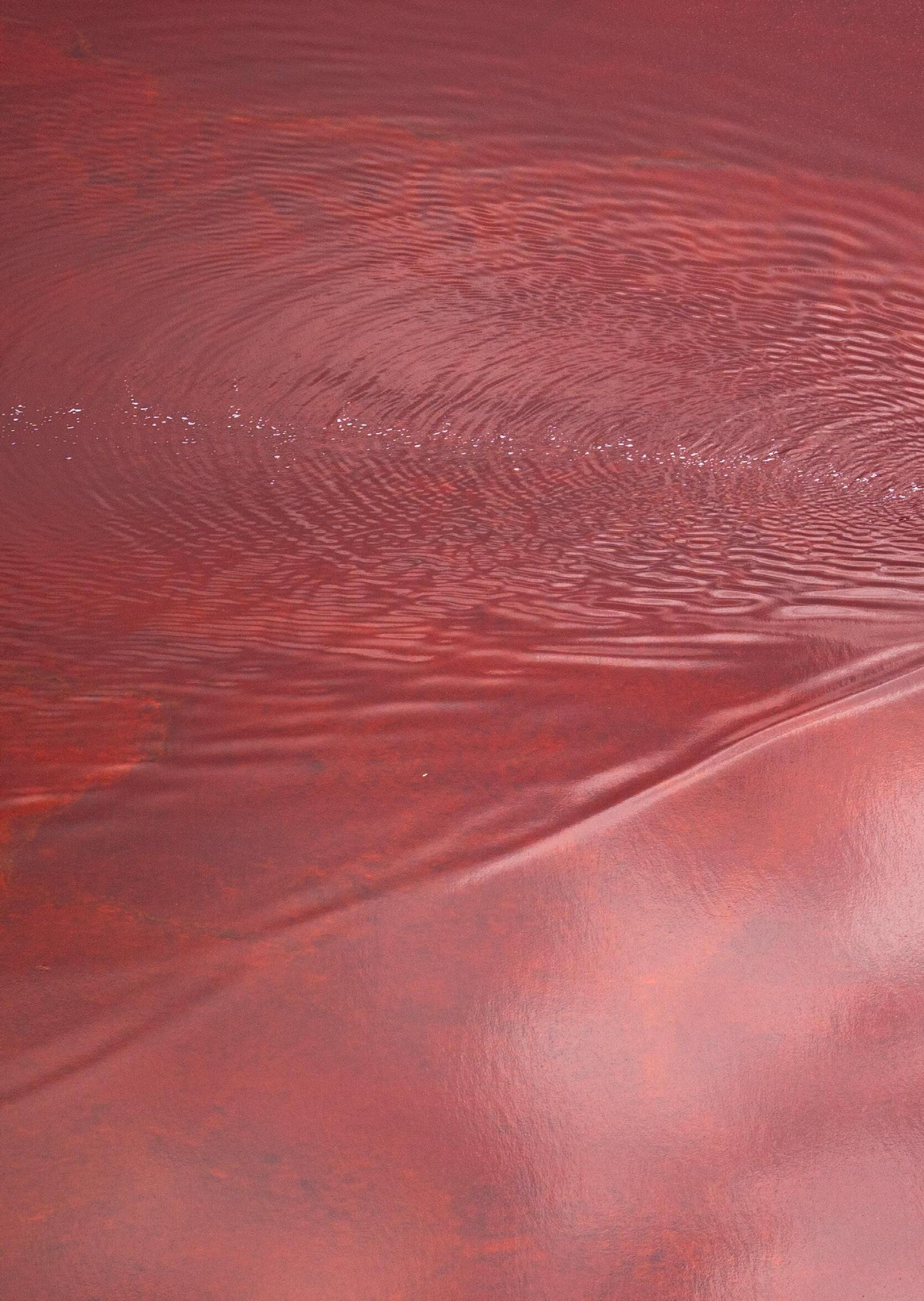
Limitless Travel
Designing for accessibility
Design and Conservation
Tips from The Landscape Studio
East African Brands
Katush and Siafu Home
Hello Gorgeous!
A look at Gorgeous George in Cape Town
24 hours in Cape Town By Jackie May
Nomad expresses gratitude to Gurcharan Roopra for sharing this photograph, as well as to all the lodges featured in this magazine for generously contributing their imagery.
NOMAD Issue 41 | April 2024 | PUBLISHED BY PURPLE NOMAD, ALL RIGHTS RESERVED. DIRECTORS Ben Peterson, Jan Van der Does de Willebois, Mikul Shah
CEO Lizzie Wright
HEAD OF CONTENT Ludo Fioravanti
INTERNATIONAL MANAGER Shawn Graaff
GUEST EDITOR Ami Doshi Shah
DESIGN Karan Khalsa
CONTENT & COMMUNITY BUILDER Mercy Wakio
TRAVEL OPERATIONS MANAGER Carol Soi
EXPERIENCE BUILDER Ann Wambui
FINANCE & ADMIN LEAD Wambui Everlyne
ENQUIRIES bookings@nomad.africa


7 April 2024
Blankets and Wine is a quarterly, picnic-style, family-friendly music festival based on 4 to 5 musical acts with different styles of urban African tunes. The event’s approach focuses on genres in Afro-jazz and Afro-soul as well as live music. The show is held every first Sunday of every quarter and the last Sunday before Christmas with different brand experiences through live music, food, craft and fashion. If you missed the first Blankets, don’t worry- next one is July 7th!

27 - 31 March 2024

The annual WRC Safari Rally is held in Naivasha and captivates motorsport enthusiasts from around the world. Renowned for its challenging and thrilling course, competitors can expect rocky tracks and unpredictable weather which could transform dry and dusty trails into viscous mudbaths. As one of the most prestigious rallies in the World Rally Championship calendar, the Safari Rally exemplifies the spirit of adventure and endurance.
The next edition of the Biennale will be decentralised and held in four locations; the homesite in Arnhem and - starting in early 2024 - in three international sister sites in different continents in the Global South. In each of these sister sites, experienced curators and/or makers Sunny Dolat (Nairobi, Kenya), Kallol Datta (Bengal ū ru, India) and Hanayrá Negreiros (São Paulo, Brazil) have been invited as Interlocutors to develop a programme in their local contexts.
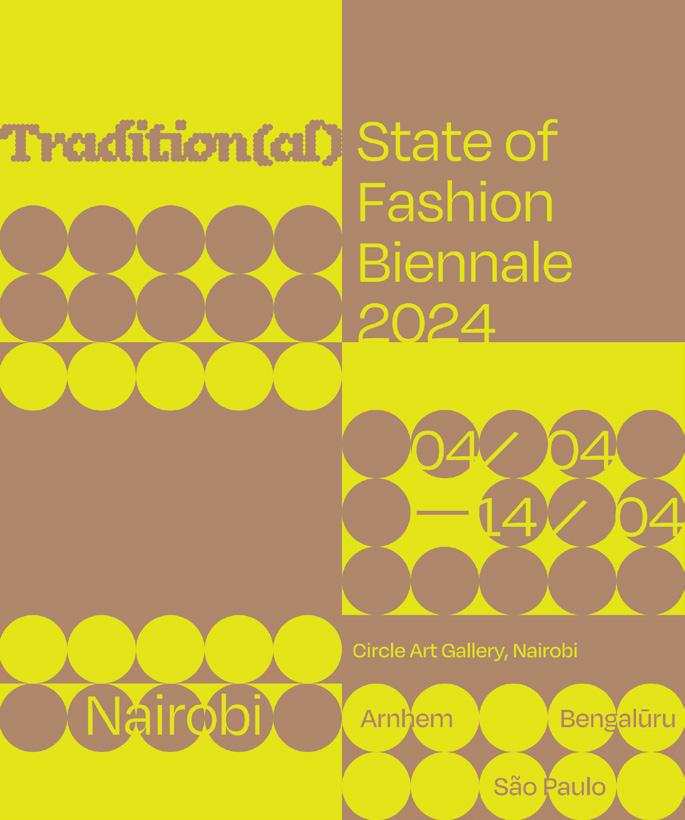
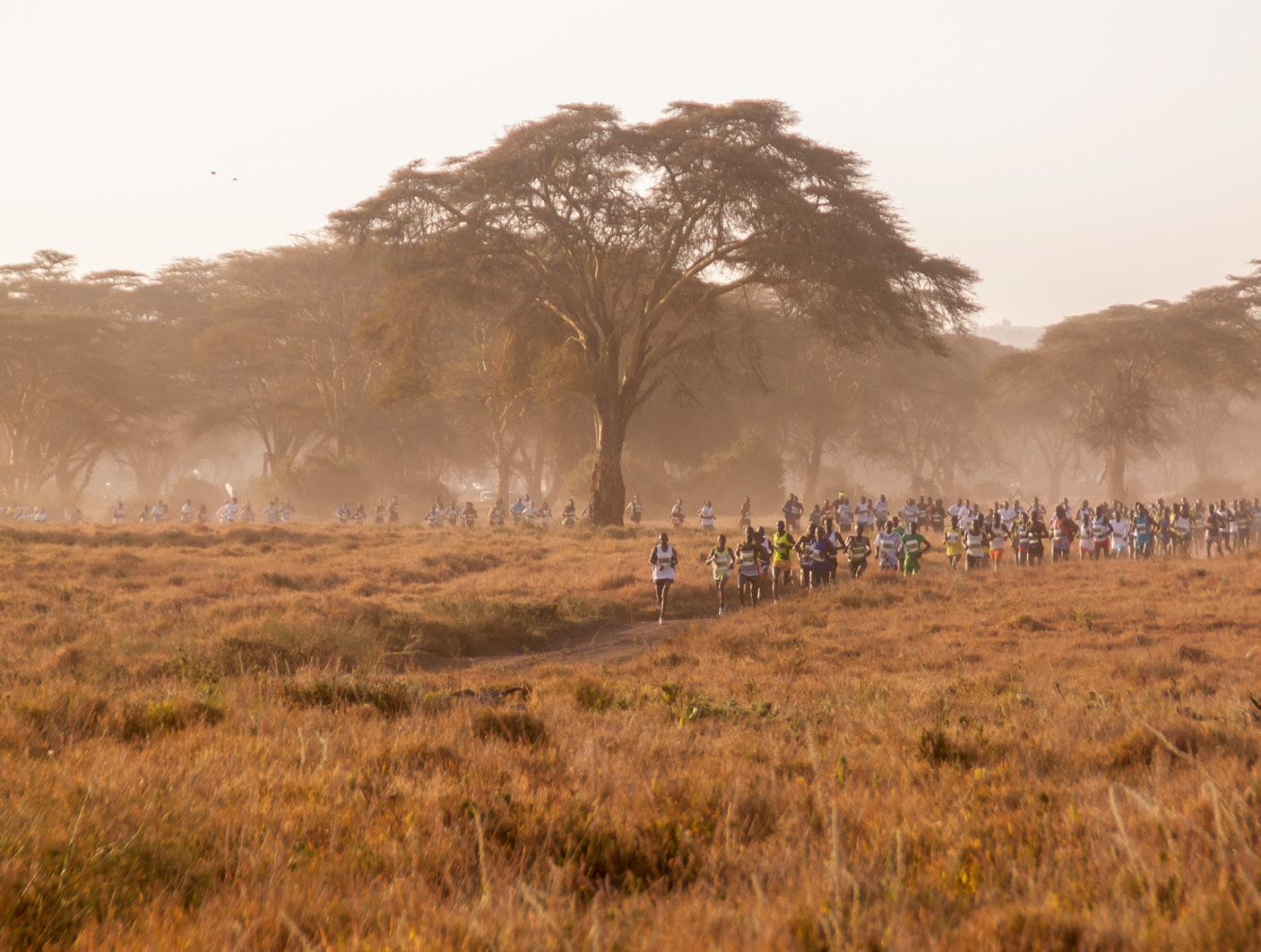
29 June 2024
Registration is now open for the Lewa Marathon! Renowned as one of the world's most demanding and fulfilling runs, it follows a challenging route along the conservancy's dirt roads, traversing the vast savannah plains, and encountering many animals along the way. This event has been instrumental in supporting conservation projects throughout Kenya for more than two decades and every participant's involvement plays a pivotal role in conservation’s future.




I am inspired by atmospheric elements, such as mist. I rose before dawn to ensure I arrived at the lake just as the first rays of light touched its surface. The scene exceeded my expectations; I didn’t expect it to be so dramatic, with no wind, and the mist rising on the water… the only thing that came to mind was Magic!
Nikon Z8, Nikkor Z 400mm f/2.8 TC f/3.2, 1/500, ISO250, 400mm
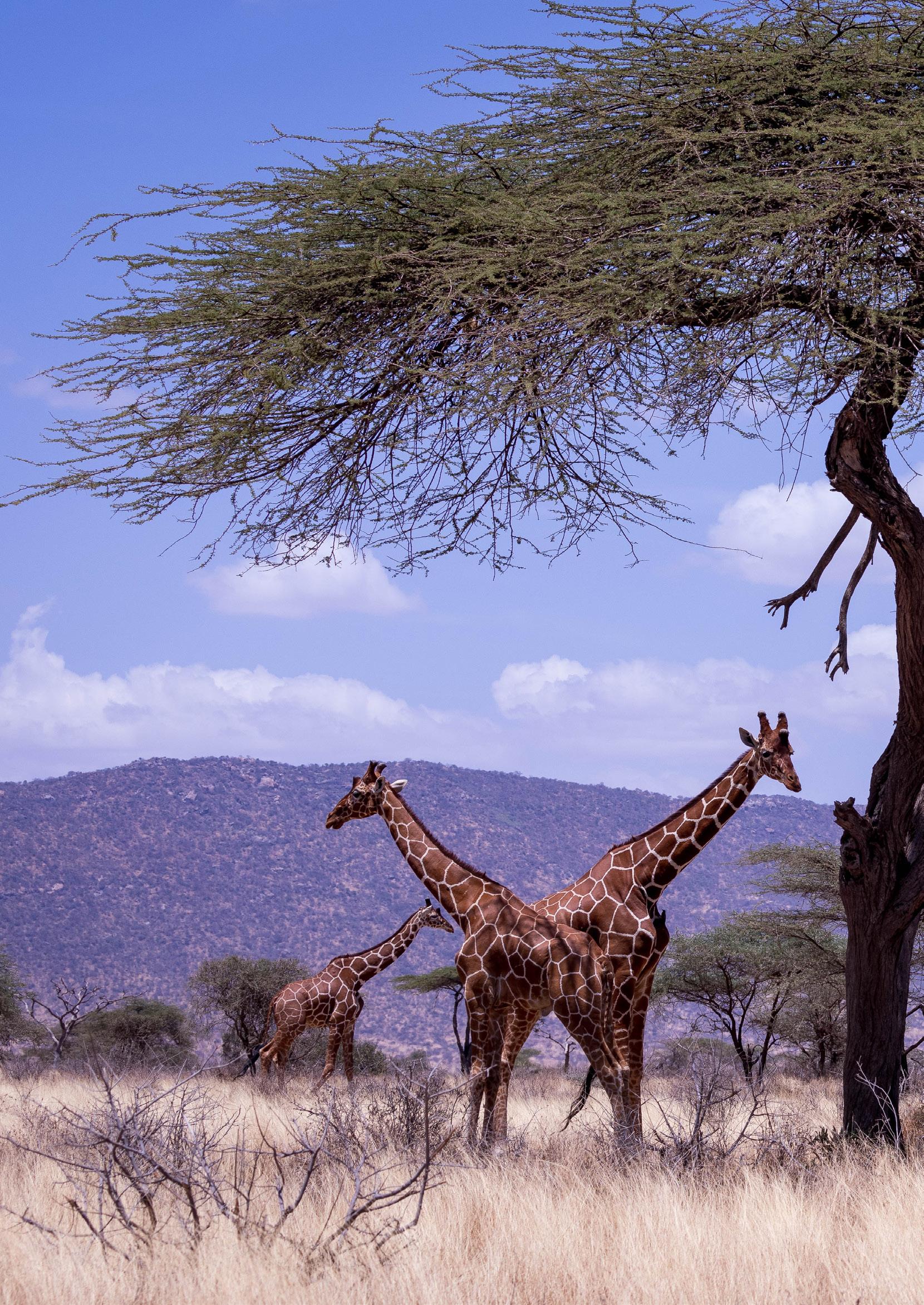


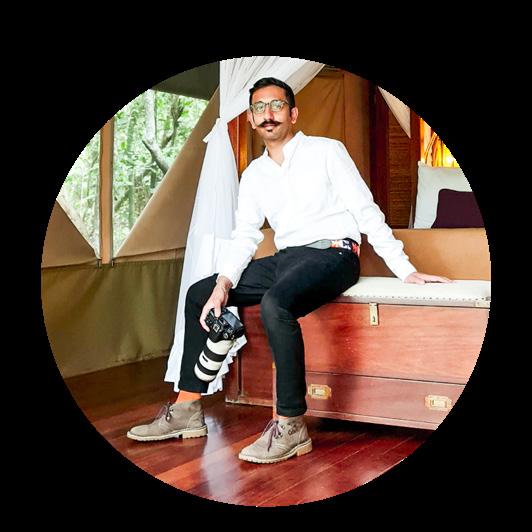
This is one of my favourite photographs I have in my collection. It was taken during my recent visit to Samburu - waiting patiently for this minimalist moment of the beautiful, reticulated giraffes under an acacia tree. A moment to slow down and appreciate the good things in life.
“Africa changes you forever like nowhere on earth” – Brian Jackman
Canon E0S 5D Mark IV EF100-400mm f/4.5-5.6 f/10.0
1/250
ISO 125

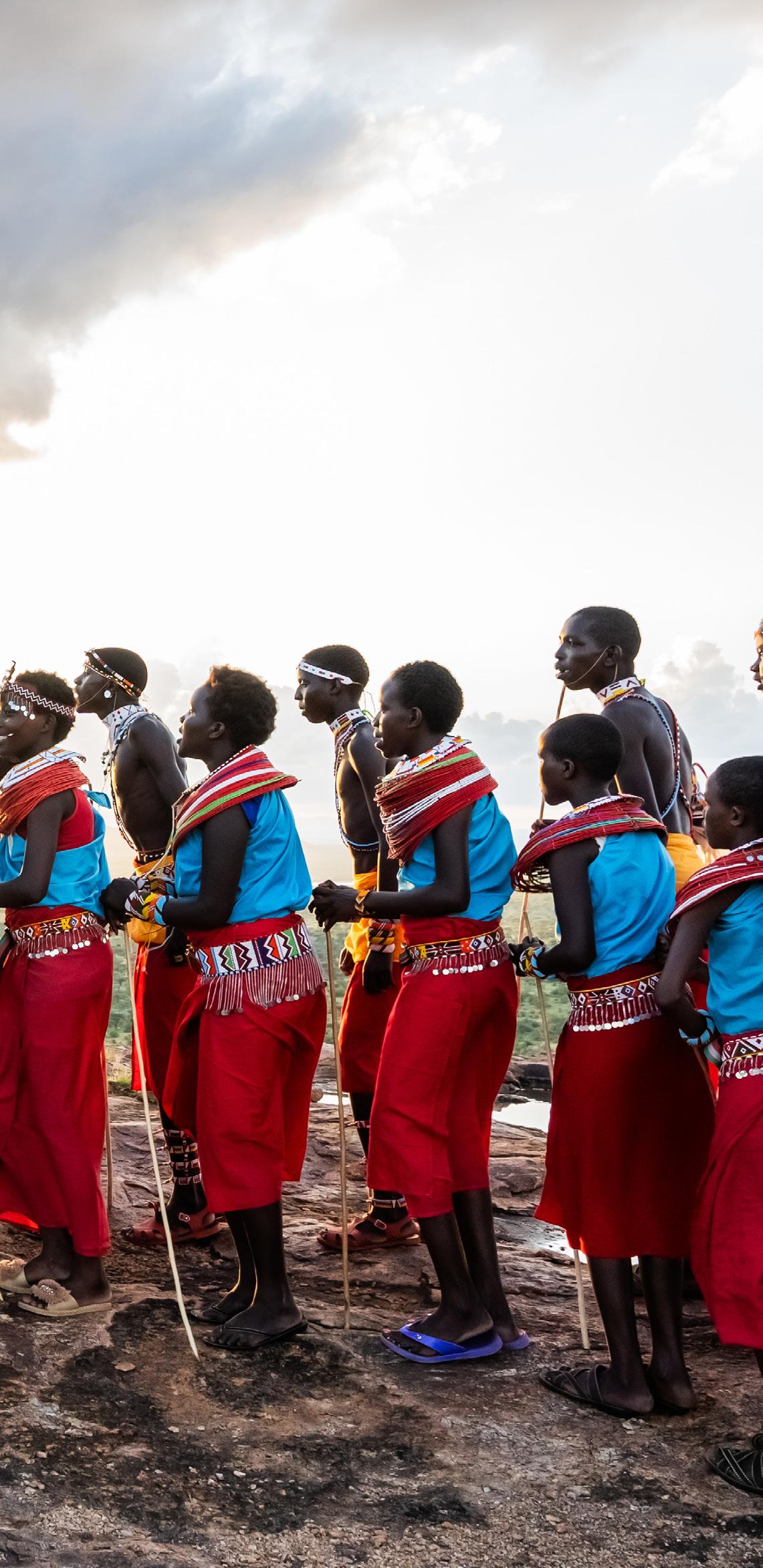


A shot of the Samburu people doing a celebratory song with the sun setting in the background. It was a celebration of their culture so they came out during sunset to sing and dance and I framed this shot as the sun was setting to capture the mood and bring out the rich colors of their culture.
Sony A7III 24-70mm 2.8 F8.0
1/200

‘Kili’ looms proudly and cloudless throughout the drive to Kimana Sanctuary- a 5,700 acre community conservancy that serves as a vital wildlife corridor serving the Chyulu Hills, Amboseli and Tsavo East National Parks. The snowfall of late has been generous to her, despite the spate of increasing daytime temperatures.
Alice, one of Angama Amboseli’s guides, picks us up from where we left our car and we drive 20 minutes spotting a family of warthogs, tails upright and a smattering of giraffe, wildebeest and vervet monkeys. Along the way, we chatted about the fairly recent opening of Angama Amboseli. November 2023 to be exact.
Recent rain had brought some verdancy to swaying Elionurus grass, but I’m told that the sanctuary is fed by meltwater from Kilimanjaro so there are pockets that are never short of vital water regardless of how sweltering the temperatures may be. The fields of Fever Trees are a
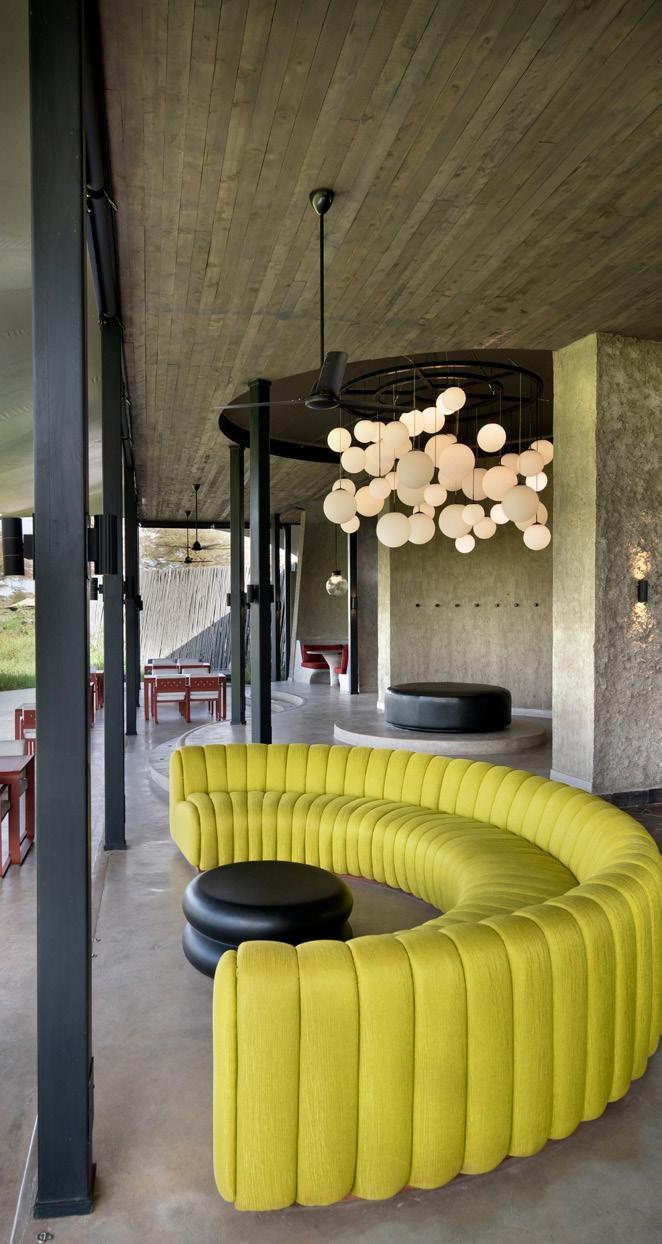

testament to that. These majestic acacias are fast-growing but short-lived and thrive in areas blessed with a high ground-water table. As we drive through the acacia orchard, the dead stumps have reinvented themselves as a lookout for curious baboons and burrows for African hares.
We’re greeted with warm smiles and inexorable Kenyan hospitality by George, the lodge manager and his team at the car on arrival. Ushered into the main lounge, through a tunnel flanked with rectangular framed cutouts and into an open double-height tented space. I could feel the palpable and awe-inspiring presence of Mt Kilimanjaro. It’s majesty, it’s scale.
The 3 peaks of the stretch tent, designed and installed by Jan Allen and his team at byDesign, are a mirror to Kilimanjaro’s three peaks, Kibo, Mawenzi and Shira (in order of height). The open expanse of the space serves as an altar to the mountain and the surrounding landscape. Throughout, the colour palette runs in neutral tones of grey and black. The walls on closer inspection were rendered with a mixture of cement and elephant dung offering curious texture and grounding to the location of the property. This region is famously home to the ‘big tusker’ elephants.

So devoid of pageantry, the distinct design details such as the walls, the curving sinew of the steps, the 3 metrewide ball chandelier, the chartreuse-hued semicircular sofa, the Fermob dining tables and chairs in terracotta become punctuators. An exercise in successful restraint, exacting detail and celebration of craftsmanship. Every object is purposeful. Either for comfort, functionality or to excite the senses and sometimes all three simultaneously. Everywhere, curves replace shape edges and corners. You’ll find them in walls, artefacts and architecture - a stylistic inspiration from the 60’s era of art and design.
Annemarie Meintjes, the South-African designer behind both Angama Mara and Amboseli, tells me, “Brainstorming started early in 2021, followed by visits to Maison&Objet Paris, the Fermob factory in Thoissey, Milan Furniture Fair, fabric houses and numerous visits to Kenyan suppliers, designers and manufactures.” Throughout the property, you’ll find custom pieces made by Kenyan design powerhouses. Dumont worked closely with Meintjes, to create handcrafted cabinetry and furniture in sustainably-sourced coconut wood from the built-in bar and coffee station to the ‘to-die-for’ 4-poster beds in the bedrooms.
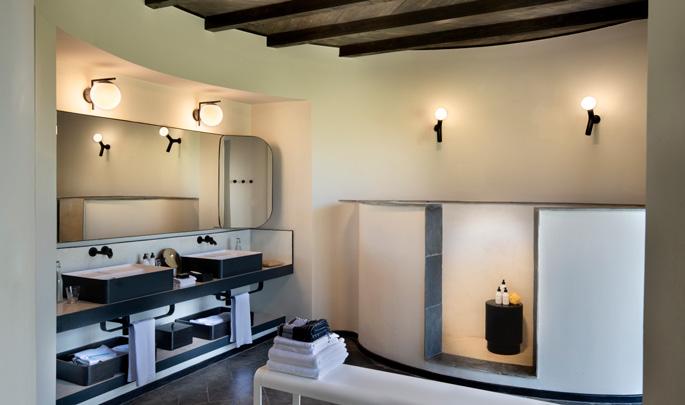

In this 6-suite property, guests can also make use of the in-house photographic studio. It’s located in a separate unit, alongside their art gallery (featuring the work of watercolour artist, Sophie Walbeoffe, whose work you’ll find in the rooms too), an entertainment room and a beautifully curated boutique with a number of Kenyan brands represented. A particularly special moment during our stay was a candlelit dinner set up in the gallery. Every dish expressed a delightfully simple, fresh and no less flavourful approach to food - I learned, that Sarah Saleheen of Boho Eatery fame was Angama’s F&B Consultant.
My favourite addition to the suites (with equally priceless views of Kilimanjaro) was an art kit, curated by Walbeoffe and included watercolour paper and paint, brushes, a mini easel, and a colour mixing palette. Our stay at Angama Amboseli was a love letter to the way design can create a sense of gentleness and calm. With clear and intuitive intent towards the architecture and objects within it, you can take time to appreciate the most accomplished designer of all. Nature itself.
To book your stay at Angama Amboseli, scan the QR code.

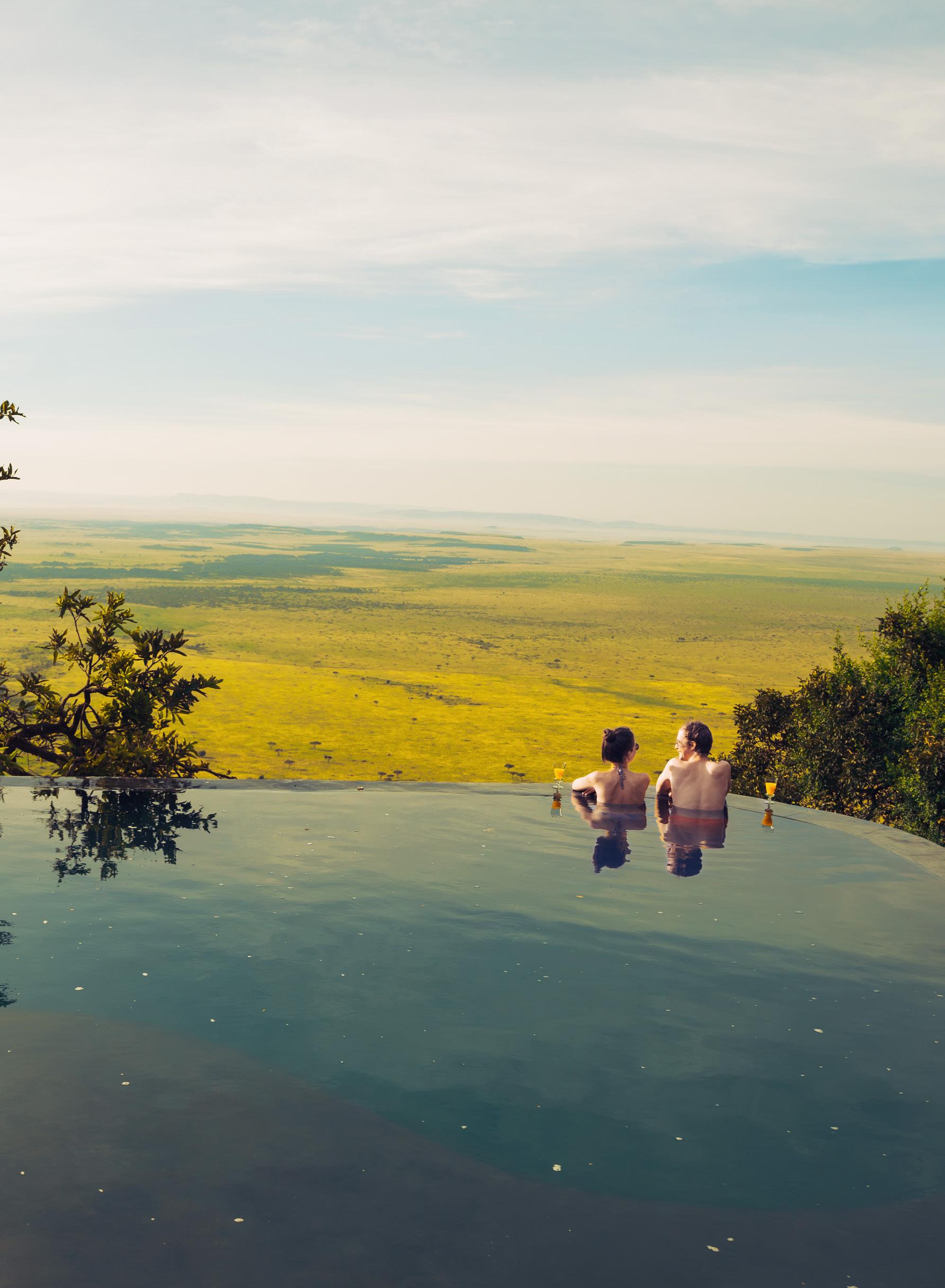
The Maasai Mara's most exclusive gem. These villas redefine luxury, offering unparalleled views of the Mara Triangle. Be the first to experience this epitome of opulence. Introducing
Contact us for more information: Loirien Mara Villas the
Where the Latest Trends Break First.

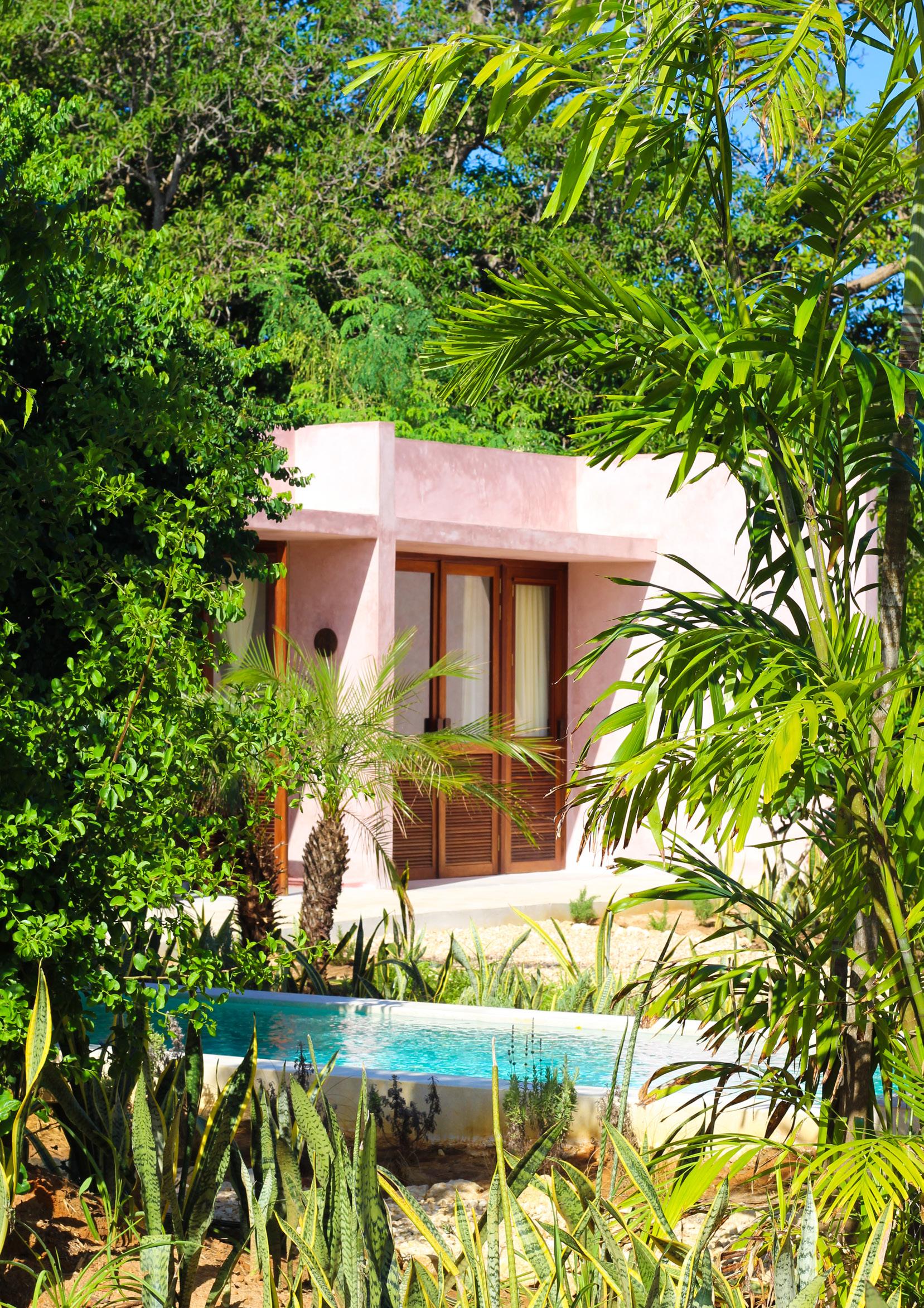
It’s a searing 33 C outside. The heavy weight of humid air settles on flushed skin. The breeze is fleeting and delivers a few seconds of respite before dying away again. Perhaps it’s my 44 years of age. I hear that age makes your body more intolerable to heat. I’ll have to Google that. I do. Links to perimenopause come up. I shut the tab on my phone and decide in this case, ignorance is bliss.
These are my inner musings before we’re en route in a delightfully air-conditioned car to Takaungu, Kilifi. Subzero would have suited me just fine at this point. After an hour’s drive, we turn off the main road past Kilifi Bridge and drive down murram, past small herds heaving dairy cattle and statuesque baobabs, their mbuyu fruits dangling from frail branches.
At long last, we arrived at Ua House, a 3-bed property sat atop the northern cliff of Takaungu Creek. It’s a single-story pink-hued beauty, built within an astonishing 6 months and completed in July 2023. The heat hasn’t abated but a few steps through a coral limestone gravel strewn courtyard and into the inner sanctum of shade within Ua’s elegant open plan living and dining area, overhead ceiling fans provide a much needed cooling breeze.


Alabaster neeru lime clads the internal walls having an additional cooling and calming effect. On the far right, vidaka, or Swahili architectural niches, embellish the wall. A clue to one of the sources of inspiration for this architect-owned and designed property. Floor-to-ceiling wood framed glass doors open on either side of the lounge. This offers cross-ventilation and allows the space to become a shaded courtyard for the home. In the front garden, a mixture of fragrant frangipani, rosemary and flowering succulents provide pops of colour and verdancy to the landscape surrounding a white terrazzo pool. Perhaps one of the most iconic architectural details in this home though is a double-height ‘nook’ that faces the pool with built-in steps, leading to the rooftop terrace. Its proportionately monumental scale is iconic and yet so pure in form, softened by the continuation of the pink stained neeru that covers the expanse of the external wall of the building.
Throughout the property, you’ll find beautiful design details like the custom round coco-wood backlit wall lights, door handles, towel hangers and mid-century modern Dumont armchairs and furniture. The king-size beds were also made in Kenya by the team at Saba Studios. In our master bedroom, the bathroom was a walled sanctuary, replete with an open wardrobe, and indoor and outdoor shower.
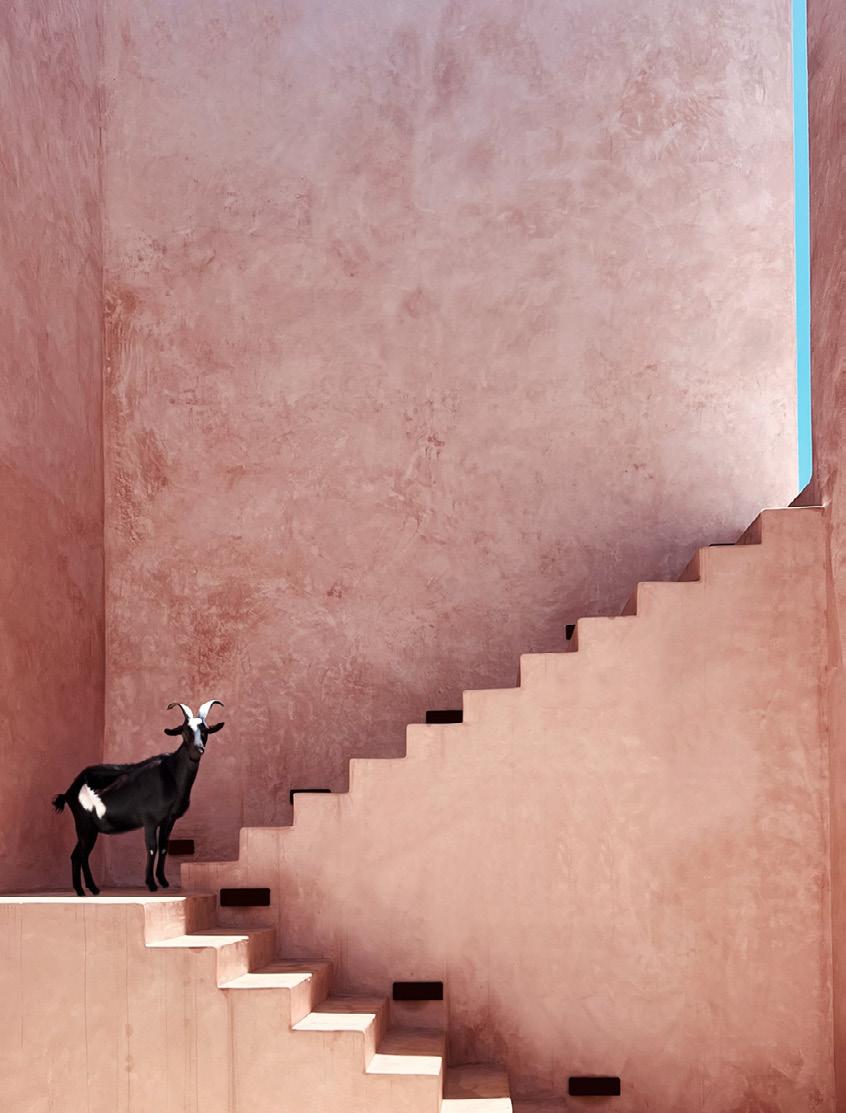
Amar Mehta, Founder and Studio Principal at Studio Mehta recounted that the vision was to “redefine contemporary living in Kilifi - to epitomize the fusion of affordability, luxury, and localised sustainability.” Ua is built primarily from materials found within a 45 km radius of the property, including ‘waste’ coral limestone used as a primary construction material. He says, “Our commitment to sustainability extends beyond materials. The architecture leverages the natural environment, capitalizing on seasonal wind patterns for passive ventilation. Eaves and architectural forms act as effective sun-shading devices, minimizing heat gain. Rainwater harvesting, coupled with a 60,000L tank, provides for the home's water needs. Additionally, the home is energyindependent, relying solely on locally assembled Solar PV panels, showcasing the studio's holistic approach to accessible sustainability.”


It’s not hard to see that the design and sustainability credentials of Ua House live up to its namesake. Ua in Swahili means flower. It's proof that the two components don’t have to remain mutually exclusive. In a world where our responsibility towards reducing our impact on the earth is ever more important, do we need to forsake beauty? As I soak in the pool, under the shade of an overhanging shrub, my inner musings take on a different turn. Less focused on the heat and my looming hormonal niggles, I moved to contemplate the skill, empathy and consideration that goes into creating such a special place. Perhaps one of the things we need for our collective futures to move in a more positive direction, especially in the built environment, is the coalescence of design, architecture, and our shared humanity.
Book your stay at Ua House:




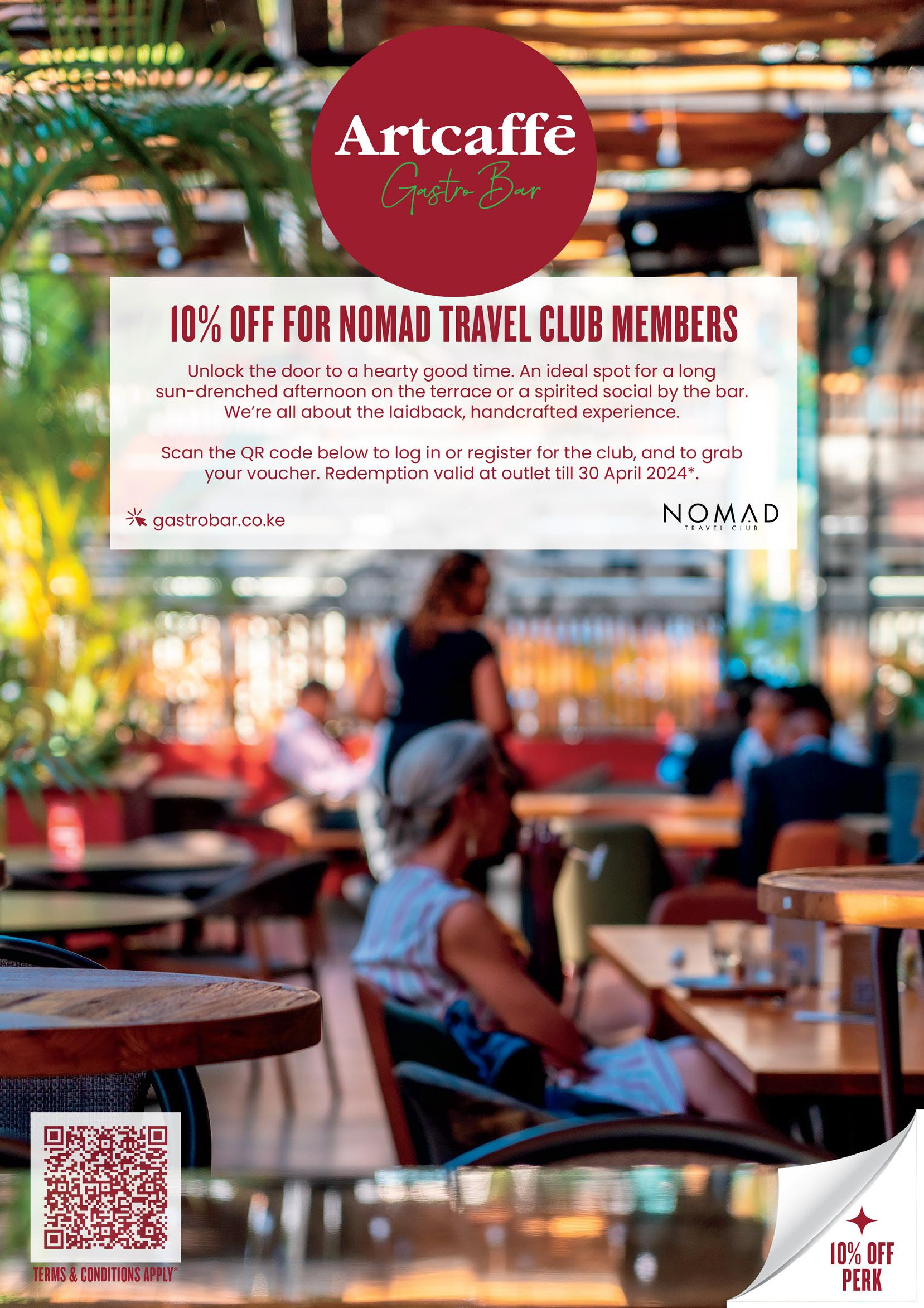


Sunny Dolat is a fashion curator, creative director and producer of international arts and culture projects. The multi-hyphenate Kenyan was a key member of the curatorial team behind the landmark “Africa Fashion” exhibition at the Victoria & Albert Museum (V&A) an exhibition exploring the global impact of the diverse fashion scenes found across the African continent. He is also a partner at Heva Fund, a Nairobi-based financial support facility that has delivered over $10 million investments to over 50 creative industry enterprises across several countries, predominantly in East Africa. Sunny was also selected for the 2023 Business of Fashion list of people shaping the global fashion industry. The team at Nomad was thrilled to ask him a few questions for this design issue.
What drew you initially to working in the creative industry?
I’ve been artistically inclined for as long as I can remember but I’ve been interested in beauty and aesthetics for far longer. I like beautiful things! While I understand that beauty and the arts aren't always synonymous, for me, beauty was my entry point into this creative universe I now find myself in. My early curiosities about the arts were nurtured and solidified in high school when I selected visual arts as one of my core subjects for both my O and A levels. Post high school, I dabbled a little in various creative disciplines, experimenting with things like dance and theatre but it’s fashion that’s held my interest for the longest thus far.
Your work across the span of a decade has evolved and touched on Styling, Film, Photography, Curation and Creative Direction highlighting work from across the Continent. Where do you feel most comfortable (professionally and geographically) today and why?
I’m a little bit of a nomad, both professionally and geographically. One of the lessons I’ve learnt about my approach when reflecting on the work I’ve done over the past 17 years, is that for me, the thought/idea/question will dictate the medium, allowing me to navigate between various disciplines, oscillating between expertise and experimentation.
As my work often involves extensive travel, this has necessitated quick adaptation and a willingness to

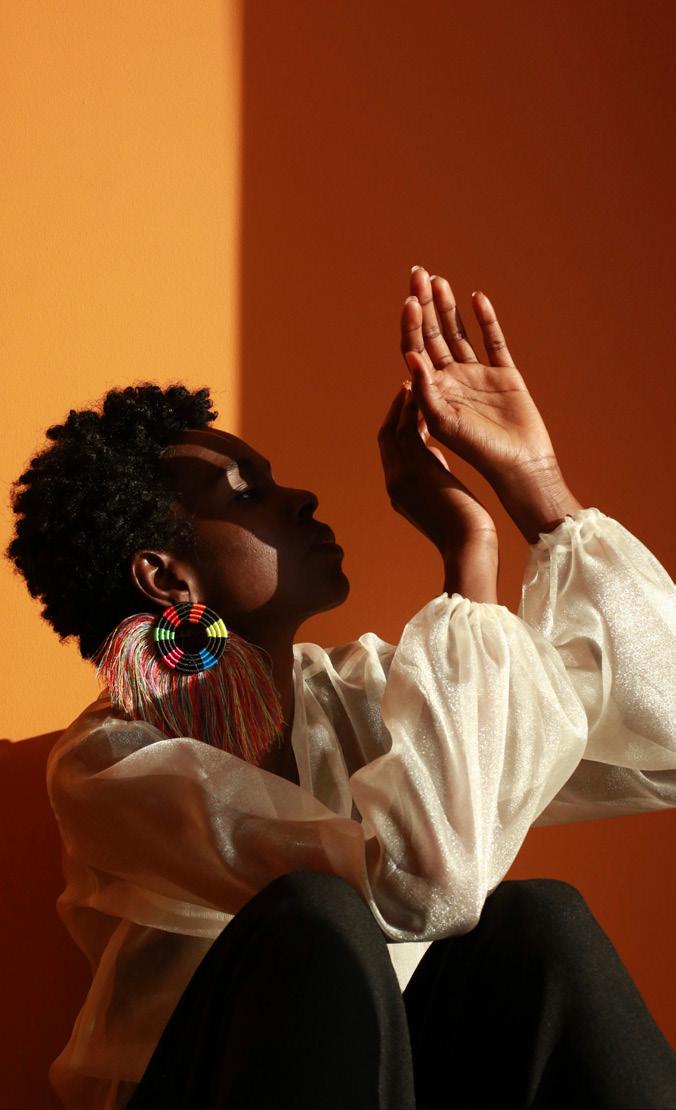
embrace discomfort. Interestingly, I've come to view discomfort as a catalyst for growth and adaptation, signalling moments where change is needed.
So I feel comfortable everywhere and nowhere.
Why is curation and design so important when it comes to hospitality and what concerns you about the narration of an “African” travel experience?
The experiential nature of hospitality demands the distillation into an essence of what “African” is. This essence is then often expressed through the properties’ design, interiors, food and beverage. These aspects serve as a vision presented to guests and the wider world of what Africa is. For some properties, there’s a tendency that this distillation leans more towards a nostalgic portrayal, reminiscent of the colonial-era “Out of Africa” narrative. While this perspective is one among many, it's deeply problematic due to its colonial connotations.
Even seemingly innocuous elements like binoculars and riding boots, intended to evoke an "explorer" vibe, take
on a different significance in this context, given their historical association with colonial administrations. However, there's a growing category of properties committed to presenting a more authentic and contemporary vision of Africa. This vision highlights agency and foregrounds contemporary African design and aesthetics, shaped by a new generation of creatives from across the continent.
What would a travel experience in Kenya look like for you? How would you curate it?
I had a brief stint working as a concierge where my favourite thing to do was develop itineraries for our guests, so this question is taking me right back! If I were to curate an experience for myself, I would start up north in Turkana, I haven’t made it up north yet, so it’s been at the top of my list for a while. So I would start up North and work my way down making stops to to see the Painted Valley and the wider Suguta Valley, then the Matthews Range, hang out in Samburu for a bit then dash off to Lamu to lay by the Majlis poolside.

What are the largest hurdles when it comes to accessibility, appreciation and awareness of design on the continent and beyond?
One of the most significant challenges we face is the lack of consistent platforms championing African design. While we may see the occasional special features or issues, the sheer scale and diversity of design emanating from the continent demand a more sustained and concerted effort. We need more design-focused publications originating from Africa that consistently push boundaries and expand and challenge our ideas of what African design is and can be.
It's crucial that design from the continent is not solely pigeonholed as 'African design' but recognized as design in its own right. If not,' there's a risk of relegating African designers to sporadic inclusion, typically reserved for "Africa issues." However, the reality is that African design is multifaceted—it's both distinctly African and an integral part of the broader design landscape.
Name 1 or a few journeys on the continent that have captivated you and why?
It's challenging to narrow it down, but I'll select three destinations that hold a special place in my heart. Firstly, Marrakech! From the breathtaking views of the snow-capped Atlas Mountains to the enchanting strolls
through the Medina, discovering diverse varieties of teas, indulging in spas and hammams, and of course, the mesmerizing array of rugs, OH THE RUGS! – Marrakech is a sensory delight.
Second would have to be Accra. It’s an incredibly vibrant city with an undeniable and infectious liveliness, as the kids say today ‘the vibes are unmatched’.
Lastly, Cape Town. Standing on the beach in Camps Bay and taking in that breathtaking panorama of the majestic mountains against the backdrop of the Atlantic Ocean, there’s nothing quite like it. But for me, it’s the strong design scene of the city that I really enjoy, be it exploring the Zeitz Museum of Contemporary Art, the Southern Guild Gallery, or the smaller independent stores at the Watershed, the city has a distinctly inspiring design scene.
What new and exciting projects are you working on and we can look forward to?
I’m currently working on the State of Fashion Biennale’s Nairobi exhibition, it’s been a long six months of preparations but we’re now in the final stretch which has been as stressful as it’s been exciting. I also started a really exciting research project, which I sadly can’t go into too much detail about at the moment, but do expect another exhibition from me in the last quarter of this year.



Nilpa is the intrepid explorer and devoted traveller behind 'The Soul Traveller' blog. Her vivid narratives aim not just to inspire travel in Kenya but to craft enduring memories, ones that will be cherished with heartfelt nostalgia.
Follow Nilpa @thesoultravellerke
The world has become a global village and (thankfully!) gone are the days when travel was reserved for the privileged few. Borders have become increasingly porous, and the thirst for cultural exploration remains at an all-time high; marking a significant shift towards democratised travel.
Contrary to popular belief, accessible travel isn’t about providing facilities that are just wheelchair accessible. It considers elderly travellers, medical conditions, different degrees of mobility requirements and those with invisible impairments.
Travelling for differently-abled persons is intimidating enough… Will the airline cater for independent disabled persons; never mind those with wheelchair needs? Are game drives with sliding seats an option? Will the lodge have undisturbed access right up to the room? Do they
have well-trained staff who can attend to these different needs? Is the sink accessible? Will people just stop and stare?
According to the Open Doors Organization 2020 study, in 2018 and 2019, more than 27 million travellers worldwide with disabilities took a total of 81 million trips, spending $58.7 billion. This staggering statistic is enough to demand a change.
Differently abled people are still subjected to this systematic discrimination where accessibility is a neglected area of design. This significantly limits their activity in a world where we otherwise fight for equality.
So, we need to change the design narrative. Concepts need to be well thought out at the start, and not as an ‘add-on’ or an afterthought.
With the world opening its doors to accessible travel, we need to adapt what is happening elsewhere and bring this home so that we make exploring our beautiful country easier. Can we learn from those who curate concepts such as ‘Travel Buddy’ to promote 100% accessible experiences? It is worthy to highlight Ximuwu Lodge in South Africa; the only fully accessible safari lodge in Africa.
Let us push our tour operators to be accommodating to differently-abled persons. Seek companies that normalise accessibility needs. Let us encourage adapted safari vehicles. We must design itineraries not to push the traveller, but to spiral around their needs.
When we relate architecture with design and people, we are at the core of inclusive travel. Design elements such as handrails and wide pathways are now fairly common. It’s now time to develop on that. Let us ask for accessible bathroom facilities at all our National parks. Set up minimalistic rooms where mobility isn’t a challenge. One key player who is doing things differently is Serena Beach Resort and Spa. Their recently installed platform stairlift allows physically challenged guests to experience the power of a beach holiday with ease. And why not?

One of the best yet most challenging places for a differently-abled person with limited mobility is in the water. Due to the buoyancy, they feel lighter and have moments where they can forget their limitations. Pool lifts should now be part of modern design. As should hydronic body lifts in bathtubs. Spas should be set around the well-being of the inclusive traveller.
There is a need to recognize and appreciate every right to safely occupy the same space as abled persons. We want accessible and inclusive worlds, yet we have built them to be somewhat exclusive. How then, can we push for change?
Can we work to offer positive travel experiences to people with different needs by addressing through thoughtful design? Can we break the barriers by being a bit more intentional with our spaces?
We talk about tourism that values ethics and sustainability; yet one that does not seem to lead the industry in tearing down barriers to differently-abled travel.
Can we have a compassionate travel industry led by the way we design?

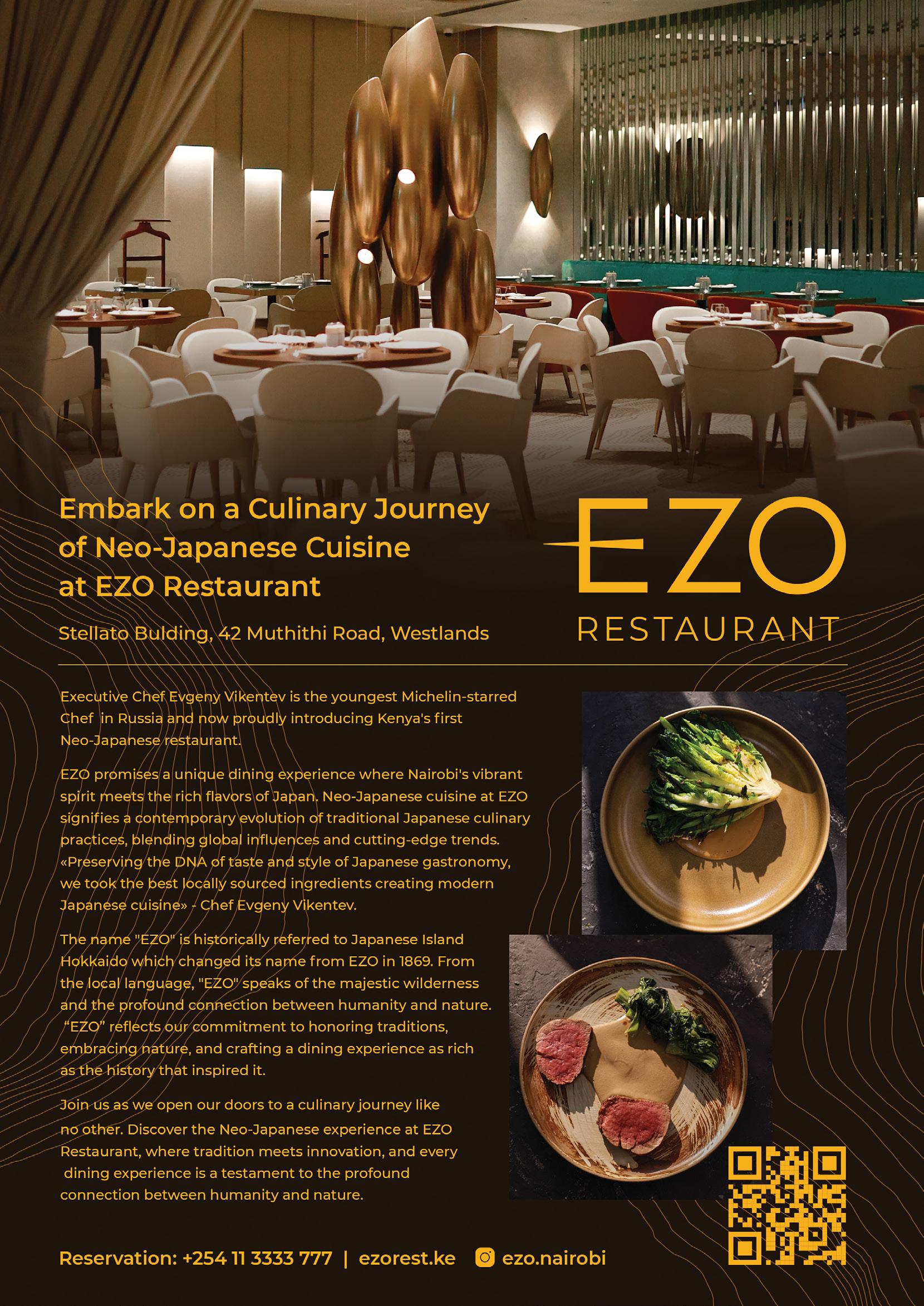

Chloe is one half of the design duo behind The Landscape Studio, an internationally recognised landscape architecture and design firm formed in Kenya in 2014. Here she speaks of designing in harmony with the natural ecology of a space.
I recently visited Melbourne. It was a huge endeavour. Travelling so far to meet and work with young landscape architecture students was enlightening on many levels. Our ventures into the nearby mountains to marvel at the blue gum forests was fun and humbling. They stand strong, towering above our heads. Nature seemed pure, strong, and heavy with smells. Inspiring and allconsuming.
Back in the architecture studios, young students peered at us shyly as we delved into their projects and sites. We work on faraway shores, in East Africa and Europe and our portfolio of projects is born from the grit of harvesting stones from site and piecing together projects by listening to our surroundings, which seemed foreign and strange to them.
Our biggest takeaway and piece of advice, as they moved to graduate and to enter the real world, was that they must ‘eat the soil’ on every new site. To get down and close to the ground to observe, to smell and see. Our practice is driven by our intrinsic need to be quiet and to listen to the site and landscape. This is especially evident when working in areas where conservation and a sensitivity to the wider ecology are critical.
In such sites, it’s our responsibility to be humble and careful, only to intervene where necessary.

The challenge of working in remote areas means we are forced to be creative and light with our tread. Literally turning the concept of ‘locally sourced’ into a sweatenduring adventure, trudging up hills behind sites to find the local stone which will form the pathways leading and allowing people to commune with the natural world. Similarly, with the planting, we limit ourselves to the palette of the indigenous species growing adjacent to the site and with that combine them and frame the experience through them which creates an immersive landscape or garden.
Such observation-driven design ensures we are sensitive to all the complex elements that entwine to make natural landscapes. This approach is critical in each project location, be it in Provence or the middle of East Africa. Distilling the essence and finding a response which speaks true to the identity of place is at the heart of our studio’s approach and our keenest design tool.
Shown here are projects within Kenya and each illustrates how we seek to respond to the surrounding landscape. From Laikipia or the Mara where projects are born from the local grasses, each design choice, both in stone, pots and planting palette seeks to fit into the surrounds. To the Coast, where our work in Kilifi seeks to make a garden out of the conservation and preservation of the increasingly rare coastal forest.
Sand River Lodge, Maasai Mara. A project again working in an ecologically sensitive area. The design uses local stone and a natural planting combinations.



Simple stone edged and compacted laterite paths leading to the rooms. We used local vegetation to soften the path as it moves through the landscape.
Lewa: Savannah Circle. One of our early projects, seeking to provide a simple space in the middle of wild grassland setting, which felt safe and open so people can lie down on the short grass and observe the unique ecology close at hand.

Katungulu Mwendwa founded Katush in 2014 after completing her undergraduate degree at the University of Creative Arts in the UK. Ever since, the brand has gone from strength to strength with presentations in Paris, New York, Portugal, Lagos and Mozambique Fashion Week and featuring in the seminal Africa Fashion exhibition at London’s V&A Museum. Every Katush collection begins with an enquiring spirit, and it is within the process that the essence thrives—collaborating with a community of skilled artisans, each collection breathes vitality into traditional craftsmanship by honouring the individuals behind the craft. Rooted in environmental consciousness, empathy for humanity, and a profound reverence for Africa’s opulent heritage, Katungulu’s insatiable curiosity reframes entrenched notions of African and feminine identities.
What excites you most about designing and making in Kenya?
It’s the connection I feel to my home. Here, with the familiar landscapes and diverse interactions, I find a sense of peace and inspiration. Every day brings forth new sources of creativity, from the vibrant cultures intertwining to the captivating journeys I embark upon to explore the country's beauty.
What are you reading/or listening to at the moment?
At the moment, and on repeat I’m listening to Bien, Karun, Blinky Bill, and Fadhilee! I’m currently reading "Sing Your Song" by Suki Mwendwa. I have a deep appreciation for African literature, constantly seeking out new recommendations. There's something enriching about perspectives that resonate so closely with my own experiences.


Where is one place/property in Kenya that holds a special place for you?
One place in Kenya that holds a special significance for me is Kitui. It's truly enchanting. The mesmerising beauty of the vast landscapes adorned with baobab trees, the semi-arid terrain, rugged mountains, and serene valleys, coupled with sandy riverbeds and forests of blue Myrrh trees set against the backdrop of red and sandy soil, create a magical ambiance.
Siafu Home is the brainchild of Gladys Macharia, a Kenyan product designer. In 2021, she embarked on a new adventure, bringing her profound expertise in colour and textiles into a more textural dimension. Kenyan-made, handloom textiles are at the heart of what the brand does. Each woven thread tells a story of craftsmanship and dedication. As of 2024, Macharia has a growing team with dedicated staff in operations, marketing and accounting and has expanded the product offering from table linens and upholstery fabric to include tapestry and carpets with stockists across Africa, Europe and the US.
What excites you most about designing and making in Kenya?
Designing and creating in Kenya allows me to fully embrace the rich tradition of craftsmanship deeply ingrained in our culture. What truly energises me is the positive impact we're making in the hand-weaving sector through employment opportunities whilst building a brand and manufacturing company. Witnessing the growth and development of individuals we've trained and employed brings immense satisfaction.
What are you reading and/or listening to at the moment?
I’m currently reading "The Hidden Life of Trees" by Peter Wohlleben, exploring the fascinating world of trees and their intricate communication systems. It's a captivating read that delves into what trees feel and how they interact with their environment. As for my music playlist, I can't seem to get enough of Beyoncé's "Texas Hold EM'' and Amistat’s, "Ready Now."

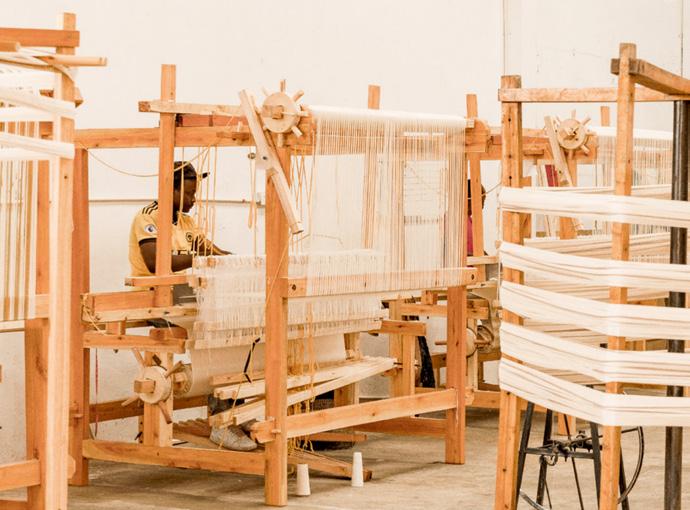
Where is one place/property in Kenya that holds a special place for you?
Lamu, with its serene waters and unhurried pace of life, holds a special place in my heart. It's the one destination where I can truly unwind, disconnect from the stresses of everyday life, and find solace in the calming energy that surrounds me.
Among the properties in Lamu, one holds particular significance for me—the Fort. This is where my husband and I exchanged vows, marking a momentous occasion in our lives.
 By Ami Doshi Shah
By Ami Doshi Shah
Behind the battered cobblestones of bustling Greenmarket Square and tucked along the pedestrianised St. Georges Mall, sits Gorgeous George, a little gem in Cape Town’s CBD. At its doorstep, and under the oak-lined thoroughfare, Zimbabwean and Congolese vendors sell curios and trinkets. In the far corner, a life-beaten elderly woman sings Zulu hymns for change. Walking among them are 9 to 5’ers, clamouring out of the surrounding office buildings trying to catch a quick bite for lunch. In and amongst this melee of sights, sounds and senses is Gorgeous George. It might seem like an odd choice of location to build a design hotel, particularly in Cape Town where more manicured and ‘sanitised’ neighbourhoods of Camps Bay, Greenpoint and Clifton boast the top hotels and vacation rentals for eager tourists. But there is something to be said for building a boutique hotel in the beating cultural heart of Cape Town.
Fashioned out of two adjacent buildings, one Edwardian and the other Art Deco, Gorgeous George opened its doors officially in 2019. Urbane Citizen Architecture and South African interior designer Tristan Du Plessis worked closely with the owner of the hotel to breathe new life into this 32-room, member of Design Hotels ™ .
The renovation took a total of 2 years. The facade was maintained and the interiors were carefully undressed to expose structural beams, pipes, and all its inner workings with what seems like industrial precision. The bare bones were layered once again in a whimsical deference to its history, and a human-centred approach to design. In charcoal-walled corridors, boldly coloured floral Mooi carpeting softens underfoot. A clever design choice optimising points of interest and drama where natural light is absent.
The Studio Room I stayed in was spacious and equally delivered in character and charm. Sash windows provided natural light and the wall features a mural by multidisciplinary South African artist, David Brits. The mood in the room evoked a more calming feeling with touches of dark blue, exposed cement slab, dusty pink velvet and highlights of painted pink pipes overhead.
In the Pink Room on the first floor (which ironically is not pink anymore), a youthful and laissez-faire energy presides where you’ll find mid-century leather sofas with teddy bears as sofa-mates, cuddle-buddies or cushions. This multifunctional space operates as a lounge, live music space (the drumkit on the far end of the room is
testament to that), conference space and an art gallery showcasing a range of South African artists on a 3-month rotation. It’s a lot to pack into one area but its eclectic design vernacular oddly computes when you make conversation with the warm, fresh-faced and artsy team that work at Gorgeous George.
Upstairs at the Gigi Rooftop Bar and Restaurant, you’ll find a mixture of Cape Town’s cool kids taking selfies in front of the “Hello Gorgeous” illuminated bulb sign on the Pool Deck for their socials, 30-something creatives having a coffee or a cocktail underneath the pergola whose ceiling is strewn with woven cane shades and verdant hanging plants and hotel guests strolling in for their mid-morning breakfast. As I sat with Terrence Pearce, Gorgeous George’s Head of Marketing, he explained that they have invested in creating their own regenerative farm in nearby Noordhoek. Here they grow a variety of vegetables on rotation including aubergines, artichokes, cherry tomatoes and kale, all of which feature in their seasonal menu. The food is casual, ingredient-focused and utterly delicious. And the cocktails are equally so!
Alas, I was sad to say goodbye to Gorgeous George but I certainly departed with a sense of belonging. There is something to be said about the proximity of the hotel to Bo Kaap (a Cape Malay Township during apartheid), the nightlife, boutiques, galleries and craft studios along Long Street and Bree Street. Here in the inner city, divergent socio-economics, race, art, music, culture and a new perspective on South African identity converge. It can feel like a chaotic mix but Gorgeous George has embraced this ‘spectacle’ in their design and the warmth in their hospitality ethos delivering something of wonder.
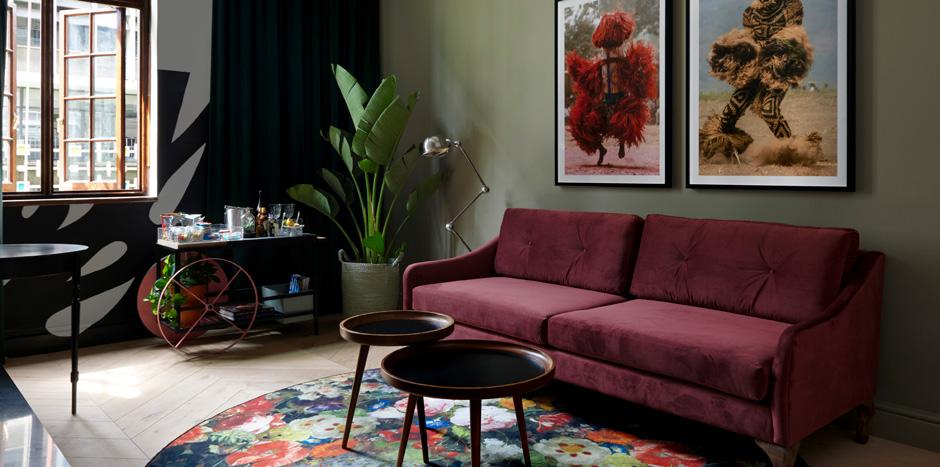
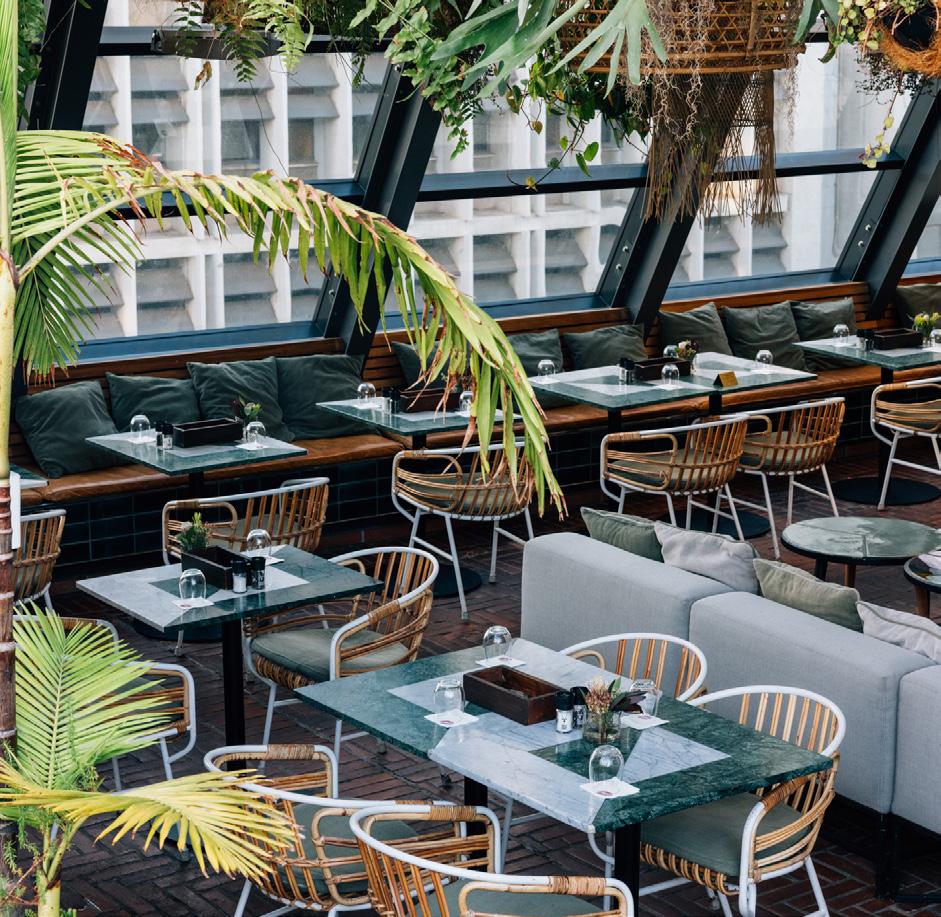
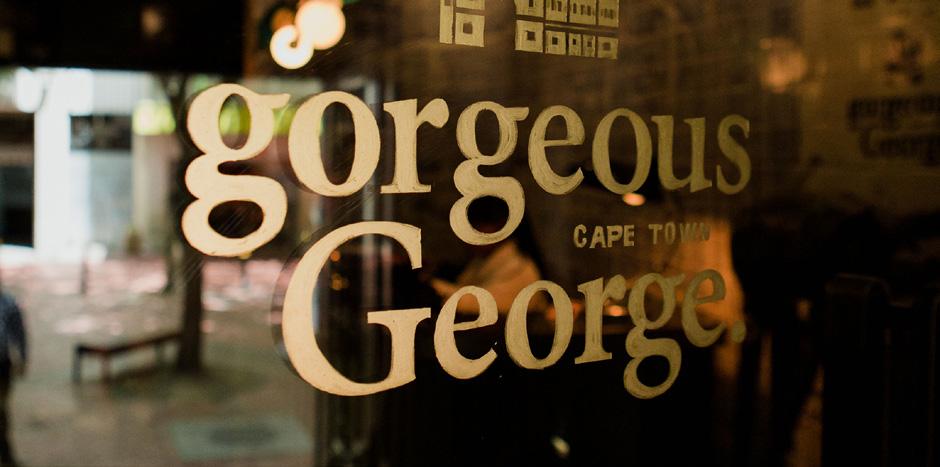



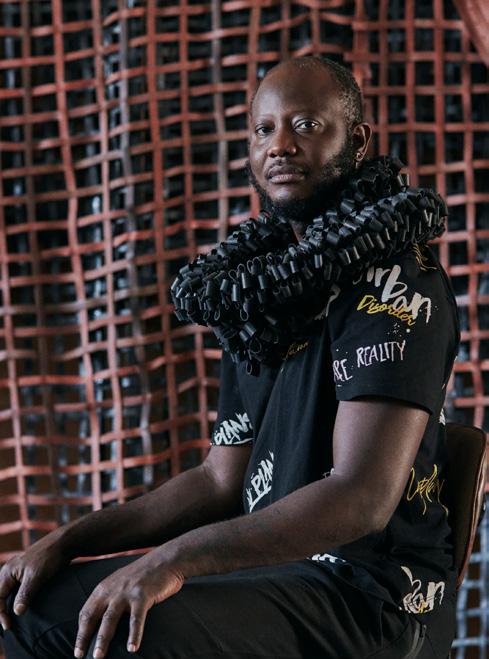

Jackie May is the founding editor of Twyg, an online sustainable fashion magazine based in Cape Town. Through fashion content, events, and campaigns, Twyg’s mission is to inspire and educate, advocating for a more sustainable future together. Visit www. twyg.co.za and follow Twyg on Instagram at https://www. instagram.com/twygmag/
Cape Town offers more than just natural beauty. It's a cultural hub with artists, craftspeople, and designers tackling existential questions. Throughout the year, institutions and events stimulate discussions about our past, present, and shared futures. Here are places likely to offer an intriguing experience in a few hours.
Art and Design
1. Zeitz Museum of Contemporary African Art (MOCAA) at the V&A Waterfront's Silo precinct. Originally grain silos, it's now a vibrant centre showcasing African art.
2. Southern Guild art gallery near MOCAA, focusing on Africa's utilitarian and ritualistic art.
3. Iziko South African National Gallery in the city's oldest public garden, featuring a vast collection of artworks.
4. Norval Foundation in Constantia, housing collections of modern South African artists and the Gerard Sekoto Foundation.
5. Always Welcome Store on Heritage Square, showcasing leading Southern African designer-maker studios.
1. Masa Mara in Oude Molen Eco Village, known for vibrant textile prints.
2. FIELDS at the Biscuit Mill in Woodstock, offering quality Cape Townmade menswear.
3. Chommies for designer pet accessories, adding a fun touch to your visit.
4. African Jacquard on Church Street and Mungo on Hout Street for locally manufactured textiles using natural fibers.
5. Philippa Green and Pichulik for distinctive designer jewelry, and Kirsten Goss for delicate pieces in Cavendish Square.
This is only a smidgen of what you will find in Cape Town. The rest I will leave you to discover by surprise and hopefully serendipitously.

In the tranquil waters of Lamu, a gem of maritime history quietly sails, offering a unique journey through time and luxury. Meet Tusitiri Dhow, whose name, meaning "shelter us," resonates with her legacy of providing refuge and adventure alike.
Originally crafted in 1950 in Lamu, Tusitiri Dhow began her journey as a trading vessel, serving for 30 years as a commercial boat while navigating the bustling waters between India, Oman, Yemen, and Somalia until the 1980s. At the end of her trading adventures, Tusitiri was left to weather away on a beach in Lamu, until the Astrup family serendipitously discovered her at the tail end of the 1980s. Transported to Matandoni Village on Lamu Island, Tusitiri underwent a meticulous restoration, honouring her origins and heritage.
For several years thereafter, Tusitiri served as a family holiday home, providing the Astrup family with treasured memories amidst Lamu's timeless beauty. Then, around 2010, the family began sharing their maritime haven with friends, extending its hospitality to those seeking respite from the bustle of everyday life. As word of its allure spread, Tusitiri welcomed not only friends but friends of friends…
It was shortly after this period of intimate gatherings that Tusitiri became a commercial venture. By opening her decks to the public in 2013, the dhow evolved into a beacon of luxury amidst Lamu's azure waters. Today, Tusitiri Dhow not only stands as the oldest dhow in East Africa, but she is the only kind left from that
commercial area of the 1950s - a testament to timeless craftsmanship and enduring allure. Manned by a team of eight dedicated staff, led by the charming Captain Mia, she offers unparalleled seclusion amidst Lamu's serene archipelago.
Guests aboard Tusitiri are treated to a bespoke experience, with personalised beach itineraries tailored to their preferences and the whims of the wind. Whether exploring hidden coves or relaxing in the sun-kissed tranquility of secluded beaches, every moment is crafted to perfection.
As night falls, Tusitiri transforms into an ethereal haven, with its deck becoming the ultimate stargazing platform. Nestled beneath a canopy of stars, guests drift into a peaceful slumber, cradled by the gentle embrace of Lamu's calm waters.
From her storied past to a luxurious present, Tusitiri continues to beckon adventurers, promising an unforgettable journey through history and tranquility.
Enquire now to book your trip on Tusitiri:

